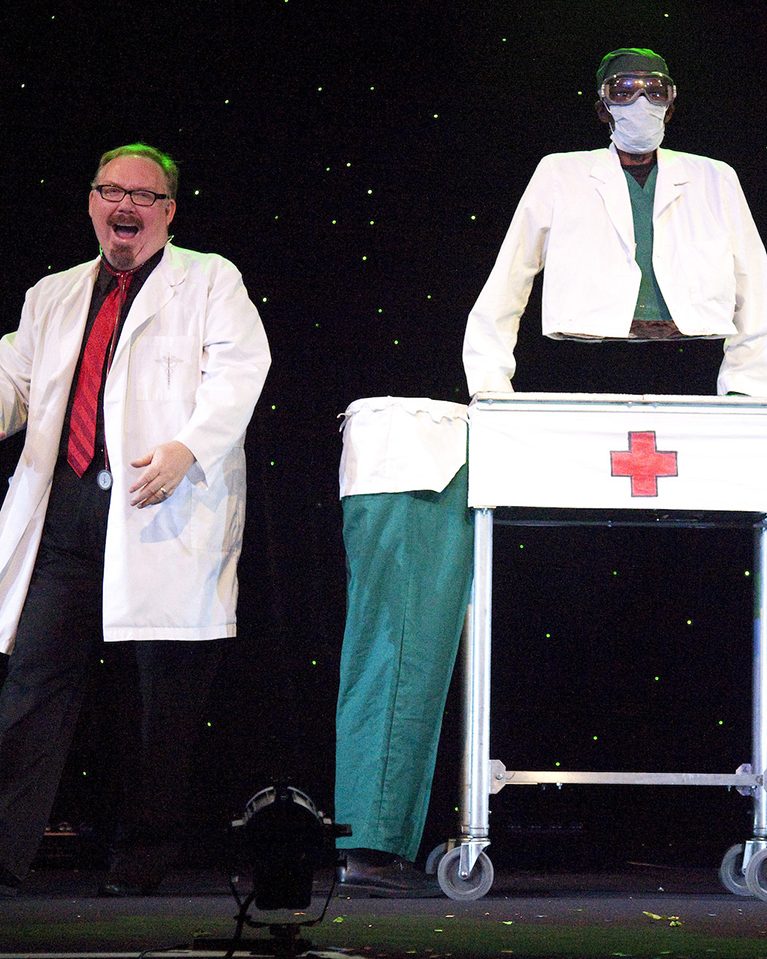Magic has a long, glorious history, and like any art form, it has its classics. The classic tricks in magic go back hundreds, sometimes thousands, of years and each has an interesting story behind it. How about a guided tour of the top five magic classics of all time?
If I were to ask you to picture a magician in your mind, you would almost certainly imagine a tall, thin man wearing tuxedo tails. If I were to ask you, “What trick is he doing?” Your answer would probably be the first trick on our list…
1) Pulling a Rabbit from a Hat
You know this one. Rabbits and top hats are the go-to images associated with magic. It is believed that the first magician to do it was Louis Comte, a Parisian magician in 1814. Now think about the last time you saw someone do it. Think about how many magicians you’ve seen do it in your life. Think about specifically when and where you were. You’re probably having trouble coming up with specifics. Because it is almost certain that you’ve never seen anyone actually do the trick in a live show. For all its staying power as the magic cliché, it is a trick that is performed by a surprisingly small number of magicians.
2) Cups and Balls
This is generally considered the oldest trick in all of magic, and versions of it can be found in many, many cultures. Back in the day, a magician was judged by his mastery of this trick. This is probably because the trick includes most of the fundamental effects of magic: the balls can vanish, appear, multiply, penetrate, transpose, and transform. Also, all the essential basic skills of a magician are required: misdirection, sleight of hand, audience management, entertaining presentation. This one has endured for a reason.
3) Sawing a Woman in Half
If the question on Family Feud was “Name a magic trick.” This one would come second (see number 1 above). It has achieved its iconic status rather quickly as it’s the newest trick on the list having first been performed by British magician P.T. Selbit in January 1921. It caused a sensation and within a year Horace Goldin was touring with his version of the trick. Modern variations divide the assistant into several sections, use clear boxes, or buzz saws and no box!
4) Linking Rings
This is also considered one of the oldest tricks in magic, and it true origins are unknown. It is usually referred to as a Chinese trick, but it may actually have originated in Japan. It is usually performed with anywhere from three to eight rings, but it can performed with a dozen or more, or as few as two. A modern variation uses finger rings borrowed from audience members.
5) Levitation
We’ve all seen a magician make a woman float in the air. It is one of the most beautiful, mysterious tricks. It was first presented by John Nevil Maskelyne in England in 1901, and it baffled all the magicians who saw it. During one performance, American magician Harry Kellar got up from his seat, walked onstage in the middle of a performance, and examined the apparatus. The performers froze, then Kellar walked off stage. Not surprisingly, before long, Kellar was performing the trick in America, which, ironically, has come to be known as the Kellar Leviation.
As we look back over this list it occurs to us that Penn & Teller, the “Bad Boys of Magic”, surprisingly perform versions of every one of these tricks. However, true to form, they have put their own unique spins on every one of these tricks, and you should check out their versions, if you get a chance, so you can see how classics grow and evolve.

